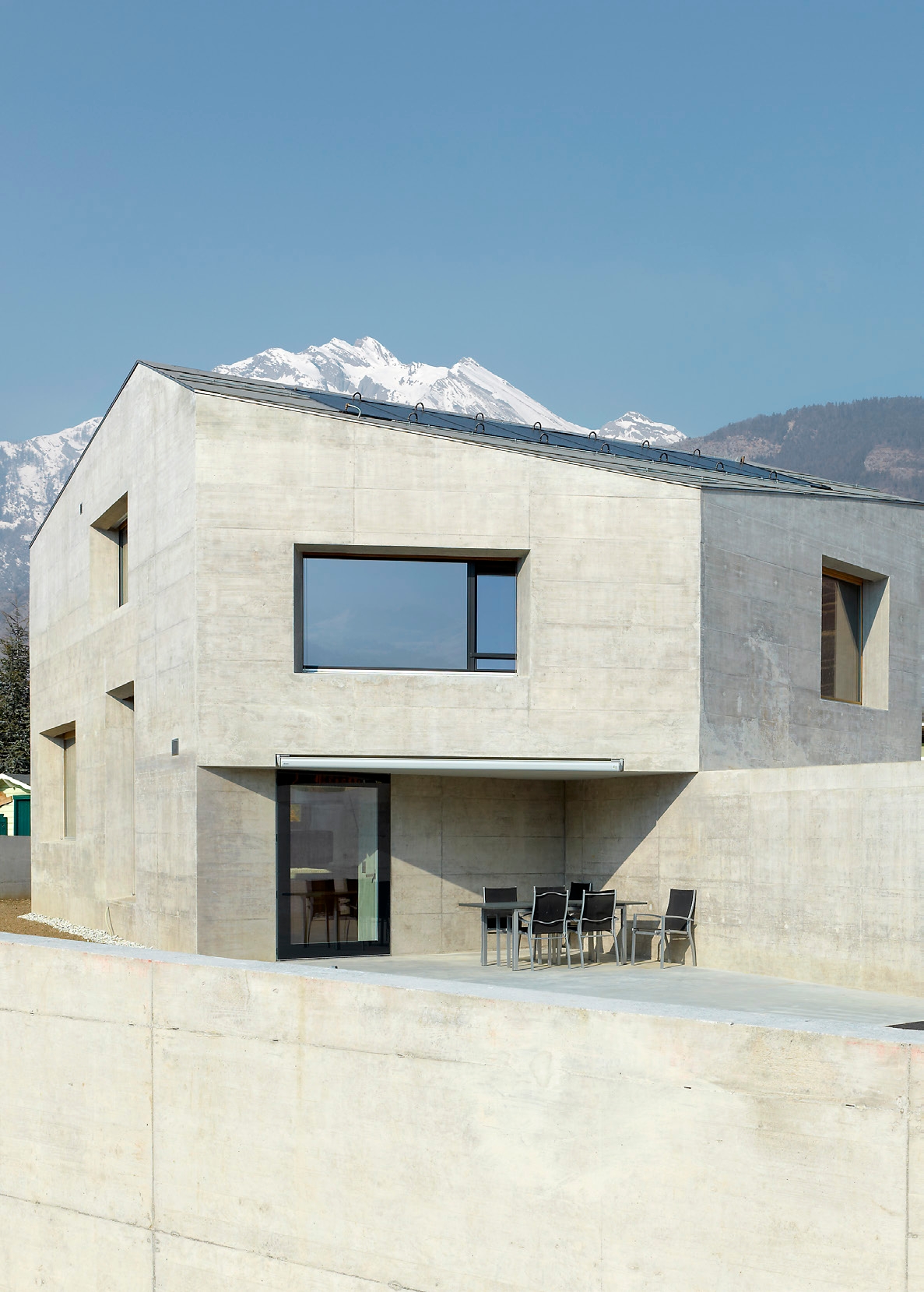
Simple as it may seem, a recurring theme in Alpine architecture is the landscape. Inevitably, whenever you look outside, you come face to face with it. Openings are embraced, at times excessively, but all the same they often have a frame. The landscape, its chill, wind and slopes, dictates the way in which buildings are constructed. We build on the rare flat fragments of land that humans have managed to carve from the mountains. The buildings are sturdy and compact to withstand the wind, like hunched backs, as seen in the paintings of Biéler. As such, it is better to forego overhanging eaves and treat the mass of the building like a monolith.
Inside, every centimetre counts. Stairs are steep and functions are interconnected, arranged like the shelters on the slopes, some high up, some lower down, with interchanging views.
The continuity of materials is ubiquitous, as if to convey the verticality of the floor to ceiling space. Dialogue with the landscape is created by reflecting (mirror-polished stainless steel), blending in (stone), or even disappearing into the landscape by covering the entire structure in a single unifying dark colour.
Sometimes, the landscape collapses, and the communities, as stubborn as alpine farmers, defy this menace. They rebuild right where the mountain has repeatedly destroyed their toil, just like at the Abbey of St. Maurice, where the falling stones serve as inspiration for the static system used to cover the archaeological ruins.







